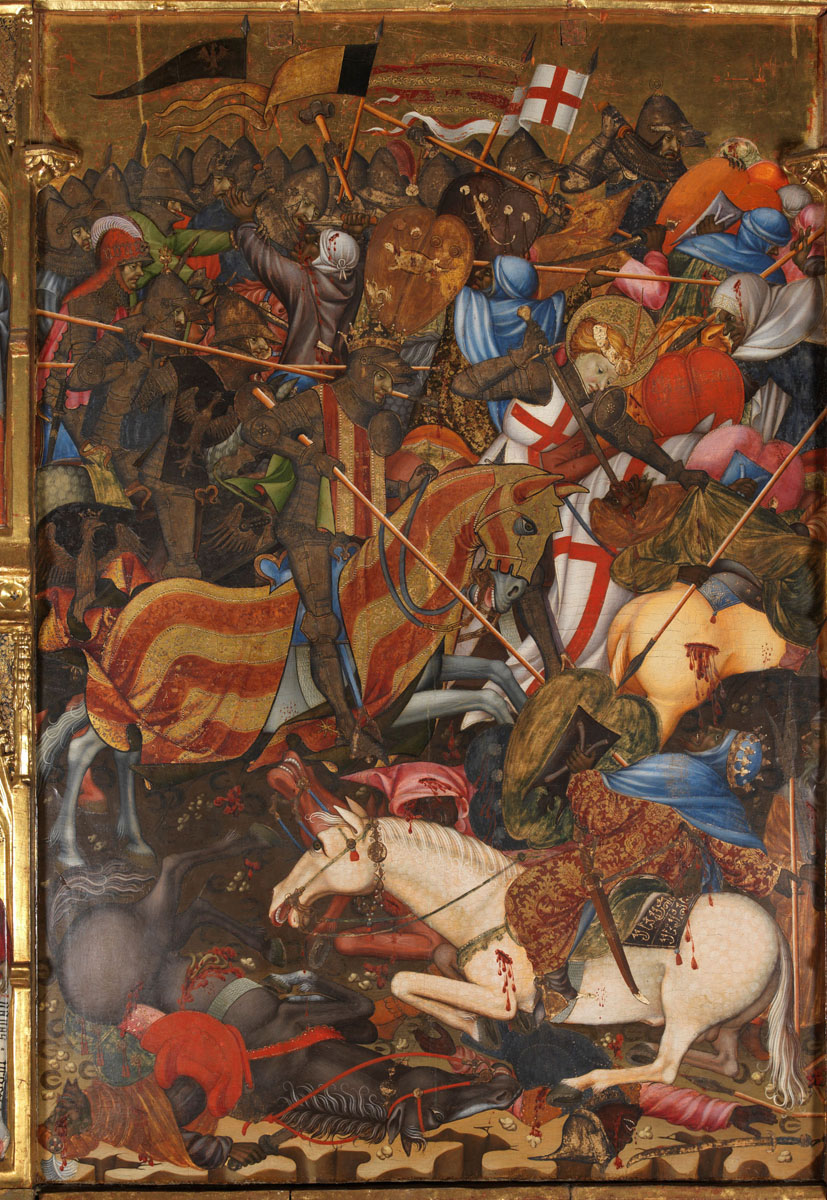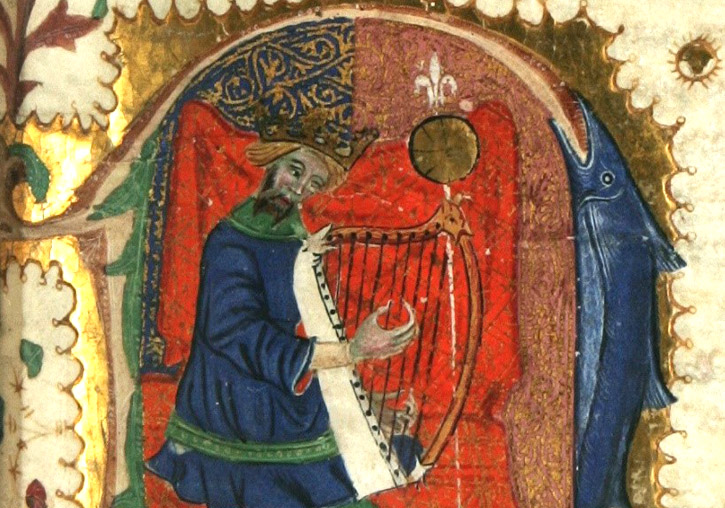More than ten artistic manifestations between 1338 and 1538 spawned the myth of James I as the founding king
- Scientific Culture and Innovation Unit
- May 27th, 2022
Francesc Granell Sales, a researcher at the University of Valencia, has analysed the representation of King James I in visual culture during the period 1338-1538. From manuscripts, paintings or acts and ceremonies, the study shows how the monarch was perceived as a founder, warrior and legislator with a particular aura, peculiar to the saints, according to the interests of the religious and civil powers. This study is key to understanding the creation and evolution of the myth of James I.

“Visual culture” is the set of figurative and architectural artistic manifestations, as well as performative acts and common objects that do not fit the traditional idea of art. The study analyses the pragmatic use of the memory of James I, in a context of coexistence between Christians and Muslims with episodes of violence and discrimination.
Among the dozen performances cited by the expert, the panel painting of the Battle of the Puig of the St. George Altarpiece of the Centenar de la Ploma stands out, preserved in the Victoria and Albert Museum in London and dated to the year 1400. It was in St. George’s church in Valencia which was located in the current Rodrigo Botet Square. The analysis of this panel painting in relation to the feast of October 9 is one of the most important contributions of the thesis because the author demonstrates that the work was part of the ceremonial commemoration of the conquest.
In addition, on October 9 in Valencia he commemorated James I through the banner, which in the Middle Ages evoked the presence of the king himself. An example of a four-striped banner on display on October 9 is in the city’s Municipal Historical Museum (at the present City Hall).
At the same time, the Valencia City Council, at the request of Peter the Ceremonious, instituted the anniversary of the death of James I through a civic procession in 1372, but the act has not been documented since. This commemoration was continued by the Cathedral of Valencia, which established it to be celebrated perpetually inside the temple from the year 1416.
Among the documents that reminded the monarch, we can also mention two manuscripts of the Furs of Valencia that represent James I; one preserved in the Municipal Archive of Valencia and the other in the Cathedral Archive, and both dated to the fourteenth century; or a book of privileges from the Alzira Municipal Archive, dated around 1380 and showing James I on folio 1, as David the musician playing the harp.
Francesc Granell’s doctoral thesis, L’aura de la memòria. La imatge de Jaume I en la València baixmedieval (ca. 1338 – ca. 1538), directed by the professor of Art History at the University of Valencia Amadeo Serra Desfilis, also cites among the objects of visual culture that recalled the conqueror, which could have been his weapons, incorporated into the Cathedral of Valencia in 1416, that is, almost a century and a half after his death and which are now preserved in the Historical Museum of Valencia.
The Liber instrumentorum is an illuminated manuscript that incorporates documents on donations or rents to the Cathedral of Valencia by James I and other kings of the Crown. The miniature of folio 6 shows James I with Hugh of Llupià, the bishop of Valencia, the two kneeling praying before the Virgin. Also worth mentioning is Lluís Alanyà’s Aureum Opus, an encyclopaedic and luxurious codex printed in 1515, which included the privileges granted by James I, as well as the history of the conquest of Valencia taken from the Llibre dels Fets.
Visual culture gone
As a missing image, there was one of the king drawn and painted at the entrance of the Brotherhood of St. James and documented in 1470. This building was where the Purity and St. James’ convent is currently located. In the church of the confraternal house there was a fresco, commissioned in 1507 from the painter Antoni Cabanes, which showed James I founding the brotherhood. Among the missing paintings was another at the entrance to the Sant Vicent de la Roqueta hospital and documented by chroniclers and scholars of the modern era.
Puig Monastery
In the church of the Puig Monastery of Our Lady, there is a sculptural bas-relief that does not represent King James I, but that commemorates the monarch, as in the Middle Ages it was believed that it was a miraculous image that appeared in the Puig after the Christian conquest. It is an icon that endorsed the presence of Christianity prior to the establishment of Muslims in Sharq al-Andalus.
Architecture
“The memory of James I through town planning and architecture is very present in the period. The chronicles give an account of the presence of James I in many areas of the city to the point that they make a kind of archaeology of the conquest: they revive the war ephemeris by identifying elements of the urban landscape”, explains Francesc Granell.
This study reviews existing historical documentation, but also provides new archival material relevant to the subject. In this sense, as stated by the thesis director, Amadeo Serra Desfilis, “Granell’s thesis reconsiders the posthumous image of King James I with the intention of proposing new reading keys and questioning the assumptions that the research had considered valid until now”.
Photo captions:
- Battle of the Puig of the St. George Altarpiece of the Centenar de la Ploma
- James I as David the musician in the book of privileges of Alzira.




















